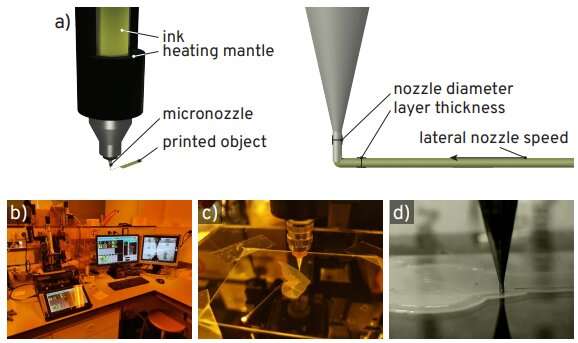Researchers at Eindhoven University of Technology developed a direct-ink printing technology that can be used to 3D print lustrous color coating using liquid crystals. The technology can also be integrated with 4D printing for new applications.
More about the research
What do cosmetics, car finishes, passports, bank notes, tropical insects, and oysters have in common? The color is formed through a specific microscopic organization of the matter making up the material, often called “iridescent” or “holographic,” both referring to the flashy, rainbow-like colored appearance. Chemical engineer Jeroen Sol explored how liquid crystals could be used as a versatile ink material to generate such lustrous colored coatings.
3D printing has found mainstream appeal in the last couple of years. Techniques falling under this name have been used to fabricate face shield parts, high tech racing bicycles, and are also finding use in personalized medical procedures. Boldly stated: if it can be imagined, it can be printed—except for our iridescent colors. A quick look in the 3D printing shop will show printing materials in all colors of the rainbow, but look for the lustrous shimmer of an oyster, and your search will be for naught.
Lustrous glittery appearance
In his doctoral thesis Jeroen Sol describes how “liquid crystals” can be used to fill this void. Liquid crystals are commonly used in computer monitors and televisions, but their possibilities extend much further after some chemical modifications. Liquid crystals of the “cholesteric” variety dramatically reflect colors as the examples in the introduction, but are still very much a liquid.
Initially, Sol shows that films of such structurally colored cholesteric liquid crystals can be broken up using ultrasonication, which turns large films into small, sub-millimeter flakes. Mixing these flakes into a transparent 3D printing plastic, results in a filament with a lustrous glittery appearance to it. Objects printed with this material also exhibit this attractive coloration.
The next step—fully structurally colored, 3D printed devices—required rethinking of the printing process, and resultingly, the feedstock ink. For this different process, “direct ink writing,” Sol chemically modified the cholesteric liquid crystal to have a consistency between honey and smooth peanut butter.
The objects printed using this ink showed a bright color that changes depending on the observation point. Additionally, the iridescence of these objects appeared to not only be decided during ink preparation, but the printing settings also play a tremendous role. “Rather than being a disadvantage, this presents opportunities: a single ink can be used for multiple distinct appearances,” says Sol.

4D printing
This versatile ink served as a starting point for the “4D printing” of iridescent materials. Through further modification of Sols colored cholesteric liquid crystal ink, this “fourth dimension” will be exemplified in the form of a color change in response to water. Inspired by the natural world—such as tropical beetles—the objects will show dramatic color transitions in response to atmospheric humidity changes.
When printed on its own, the cholesteric ink can also be used for objects that reversibly deform in a pre-programmed fashion in response to moisture. Inspired by scallops, a demonstrator is shown that shuts in a strongly humid atmosphere, and opens to dry air.
Sol: “If this thesis demonstrates anything, it should be that, while the future of 3D printing has been widely considered to be bright already, the colorful liquid crystals printed here, make it even brighter.”
Subscribe to AM Chronicle Newsletter to stay connected: https://bit.ly/3fBZ1mP
Follow us on LinkedIn: https://bit.ly/3IjhrFq
Visit for more interesting content on additive manufacturing: https://amchronicle.com/


